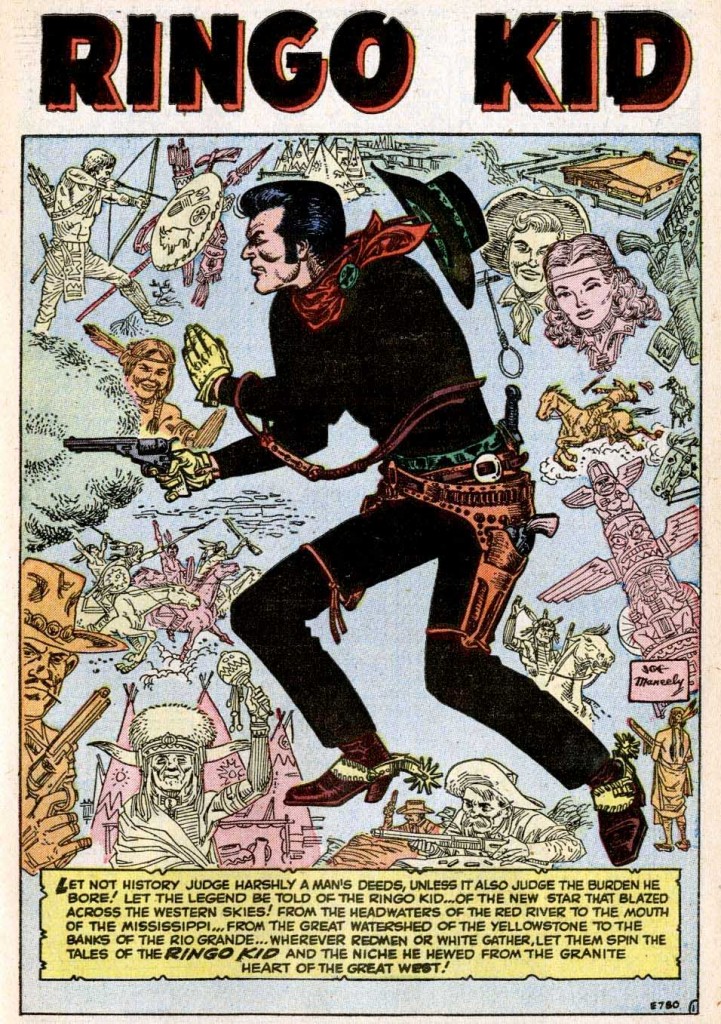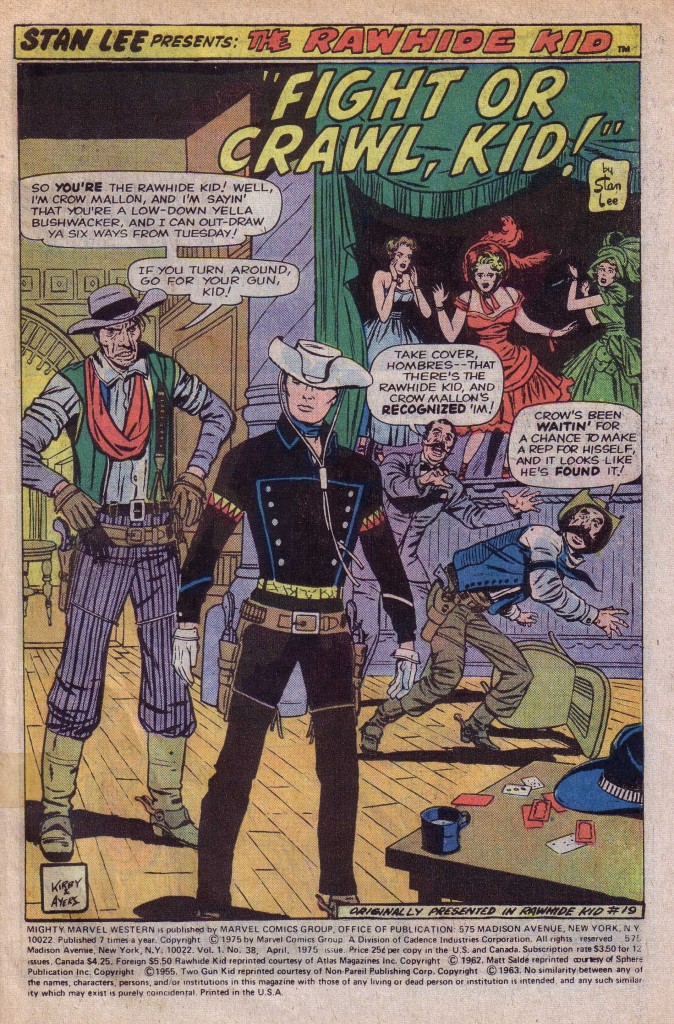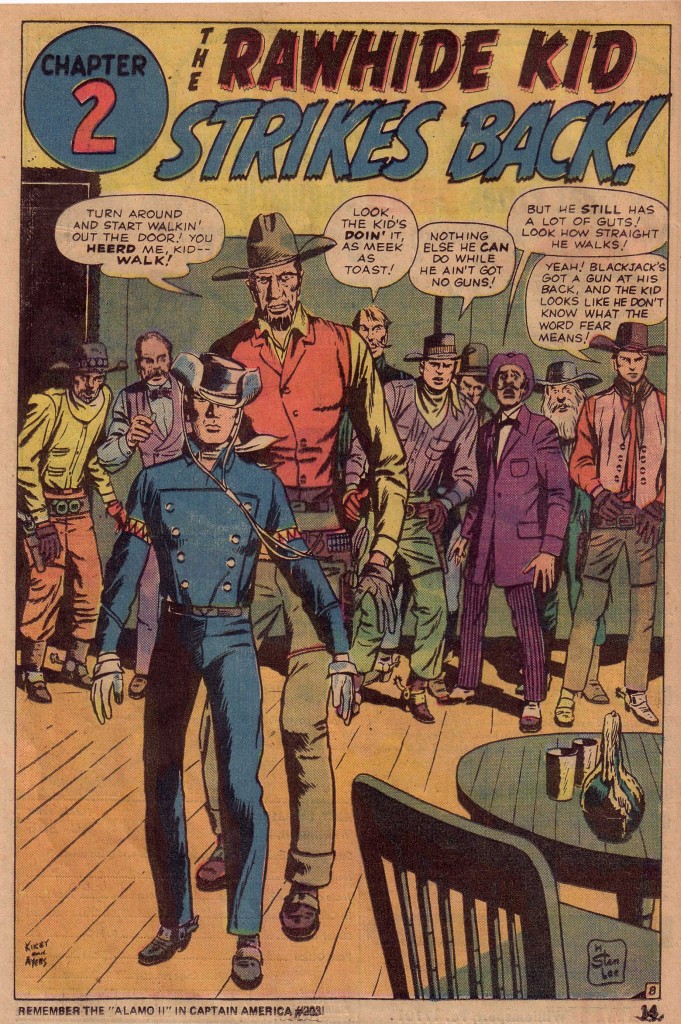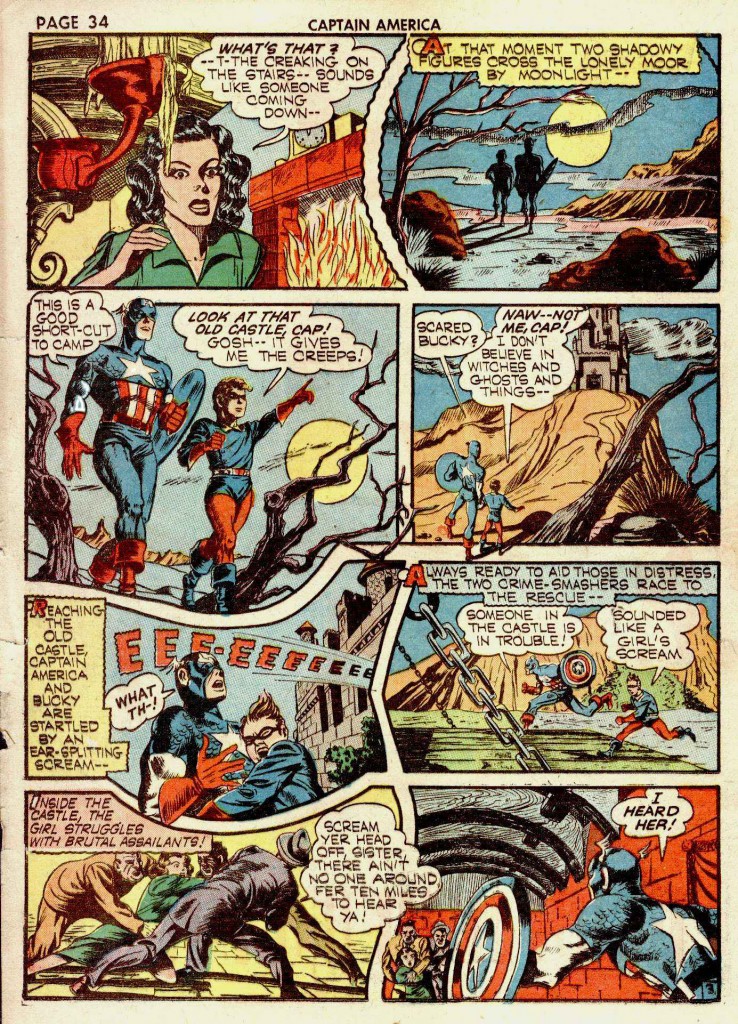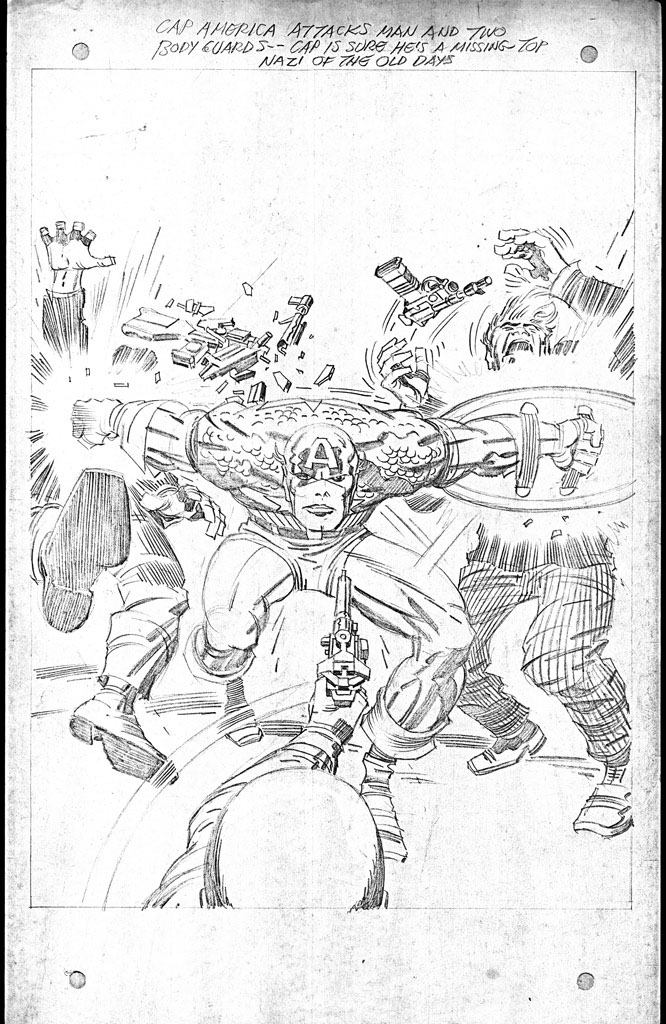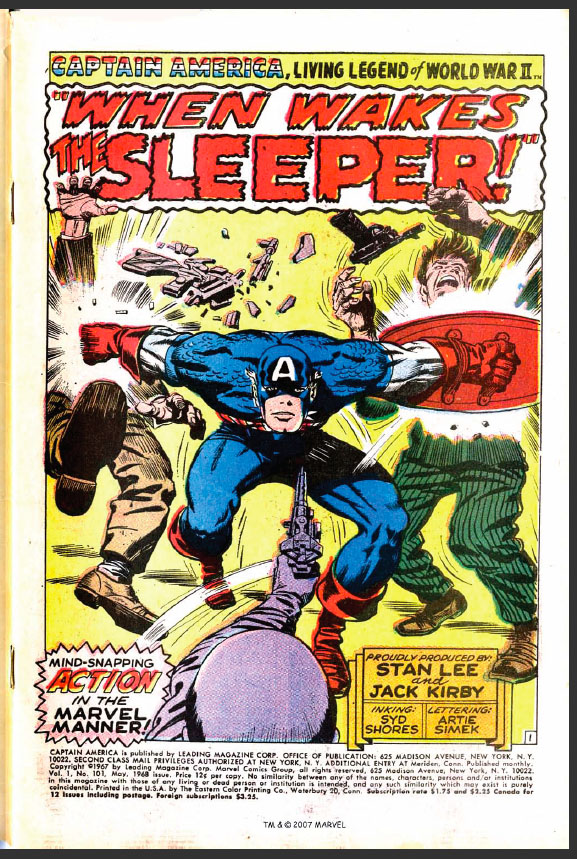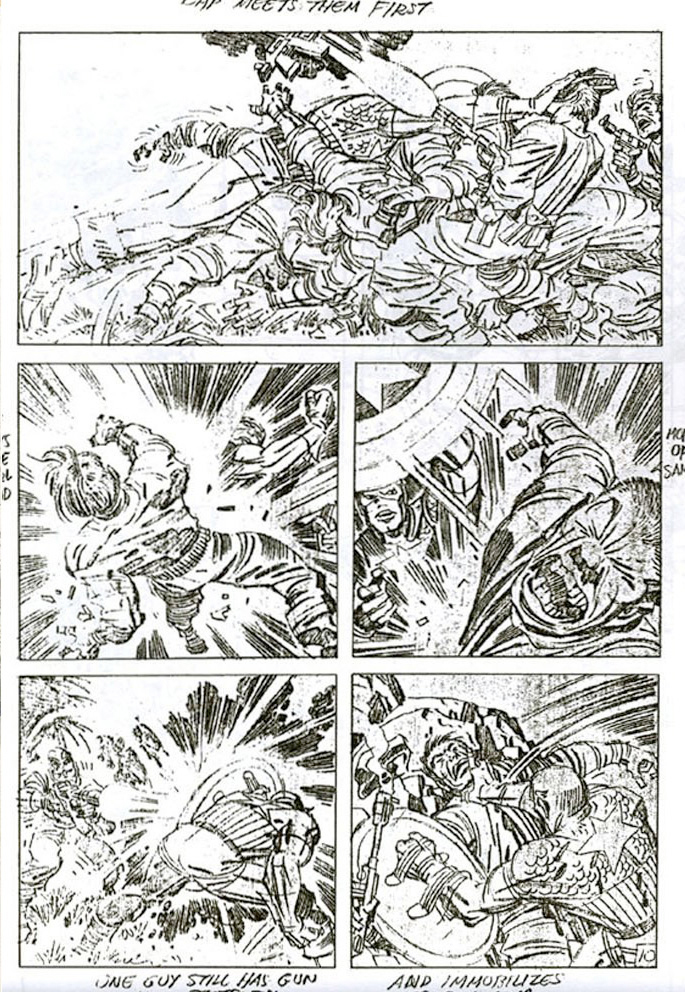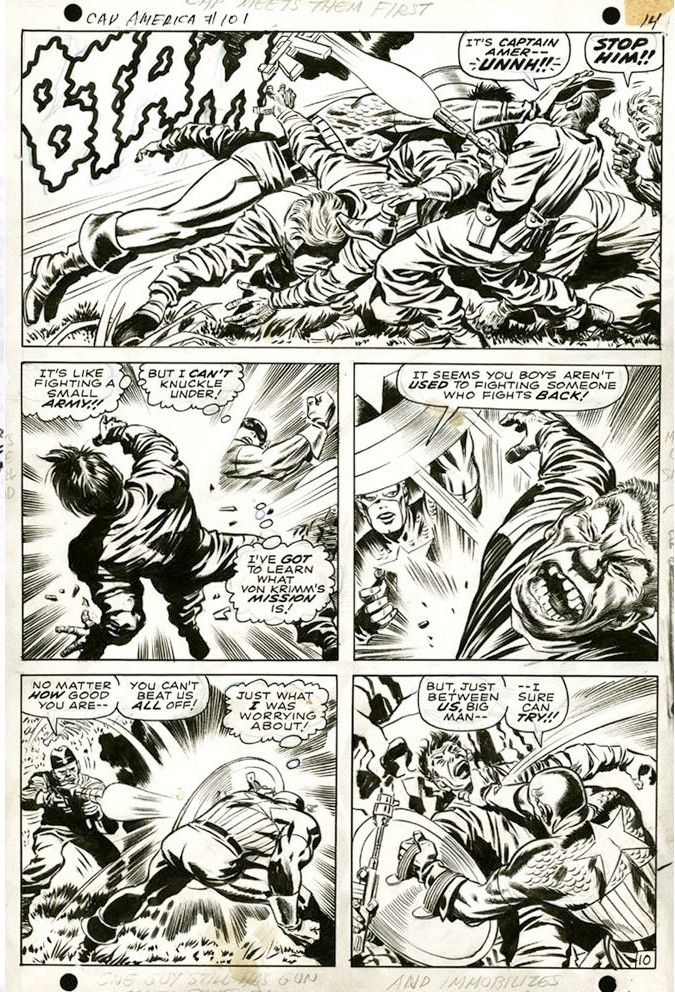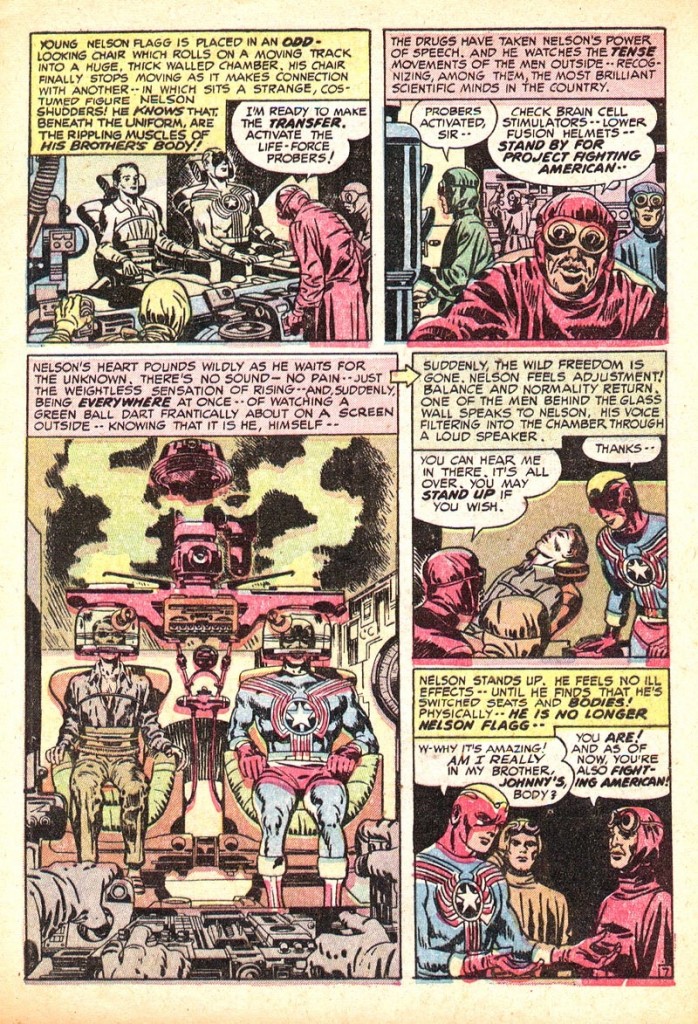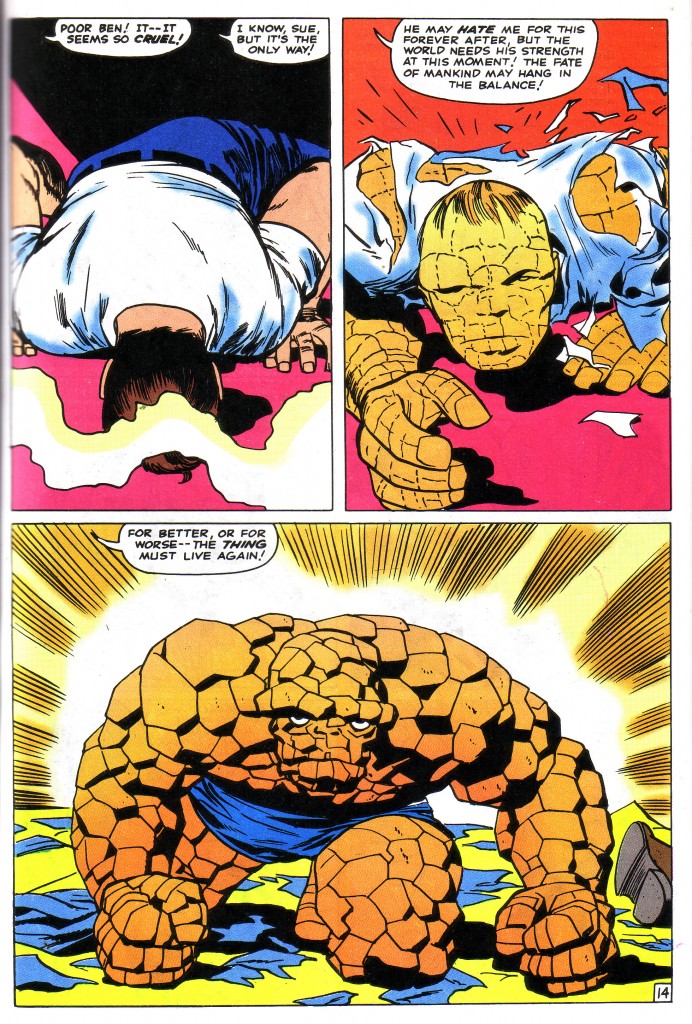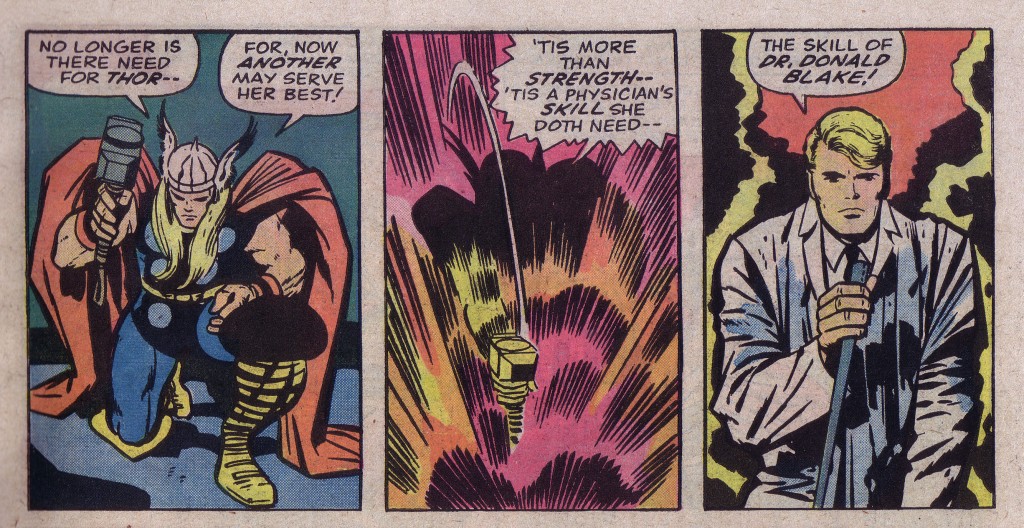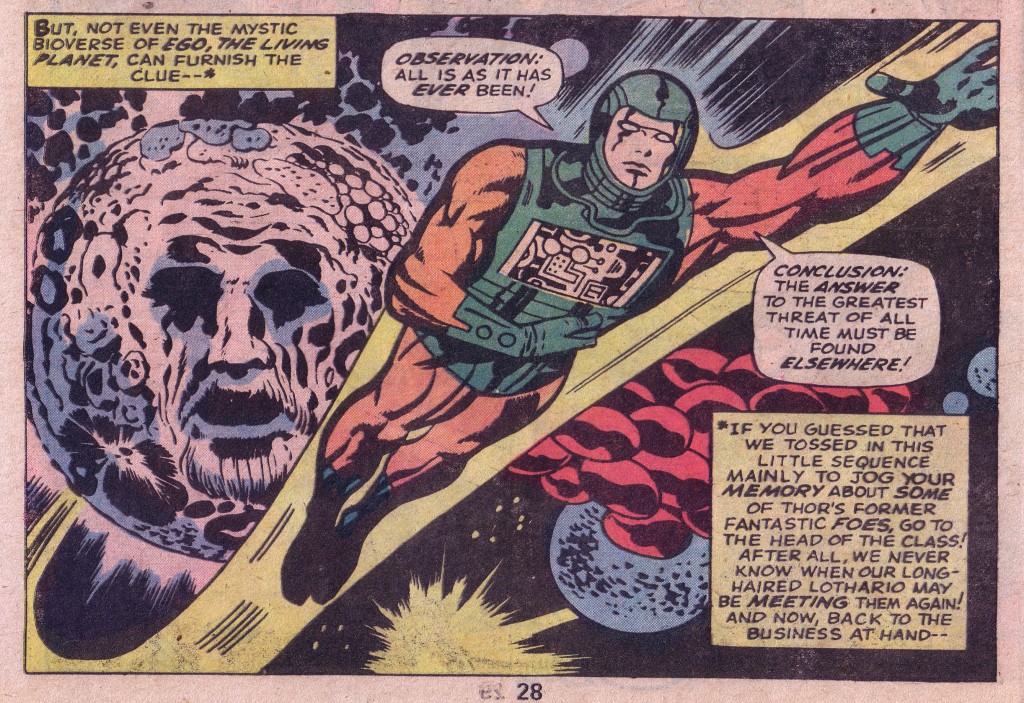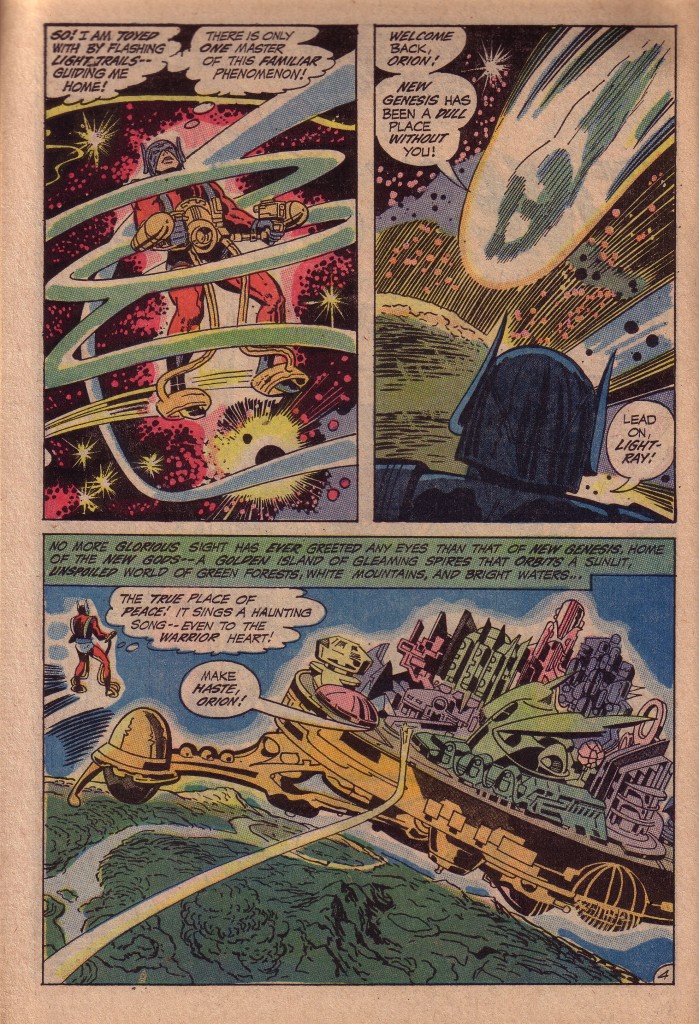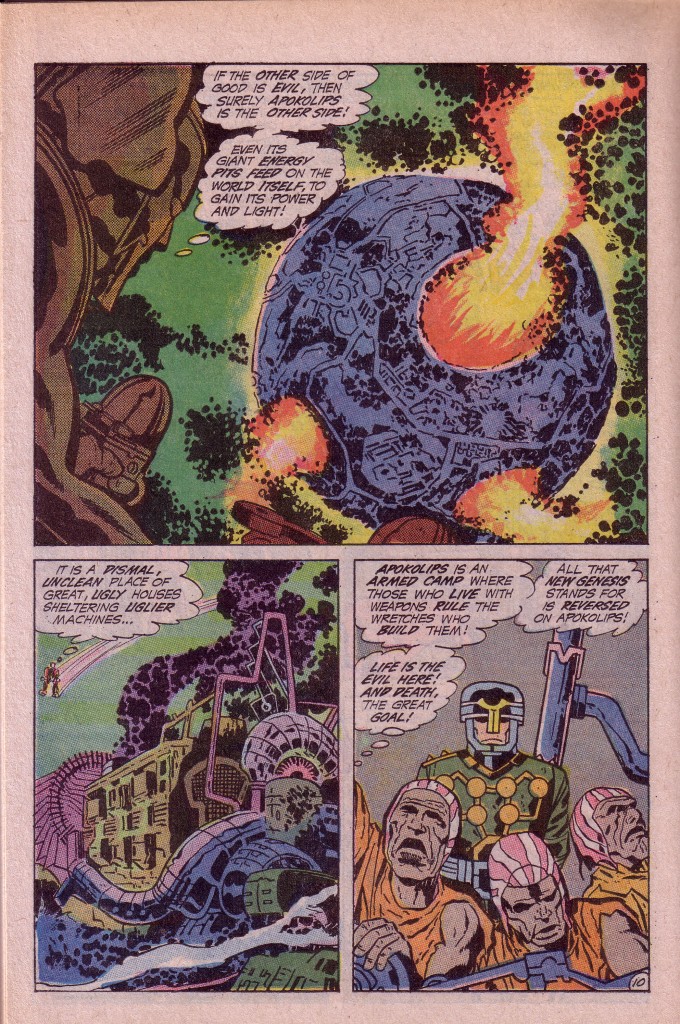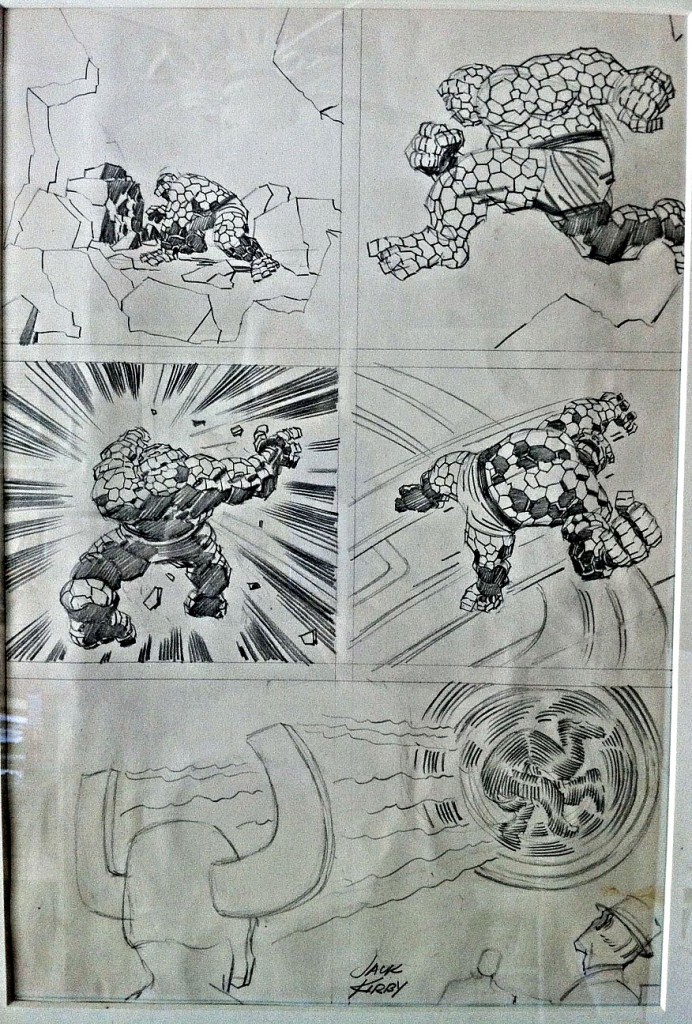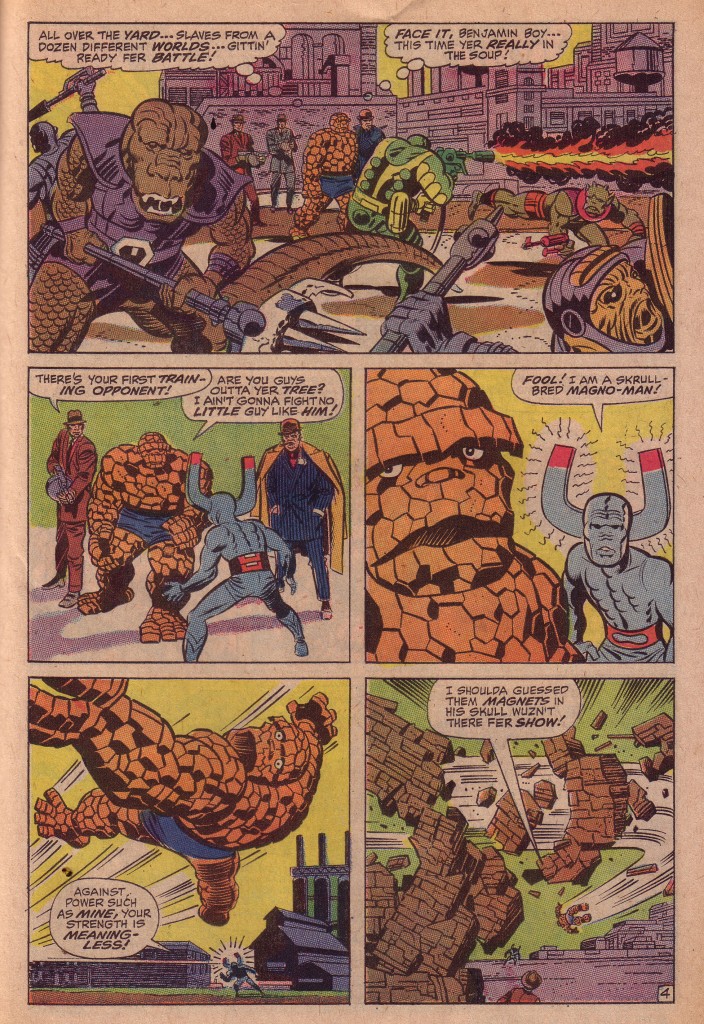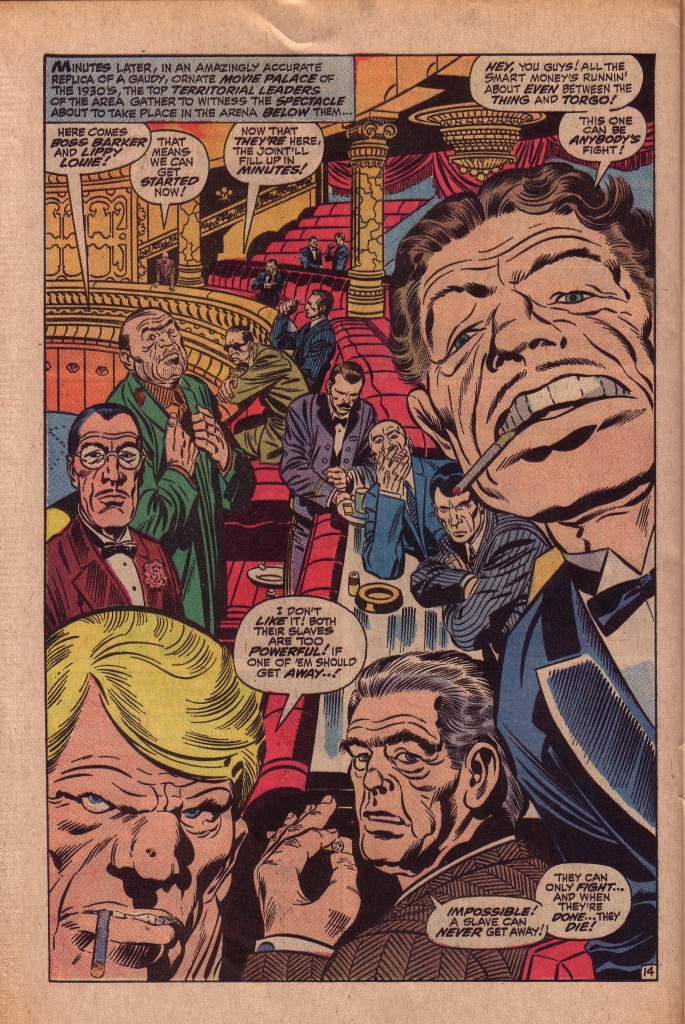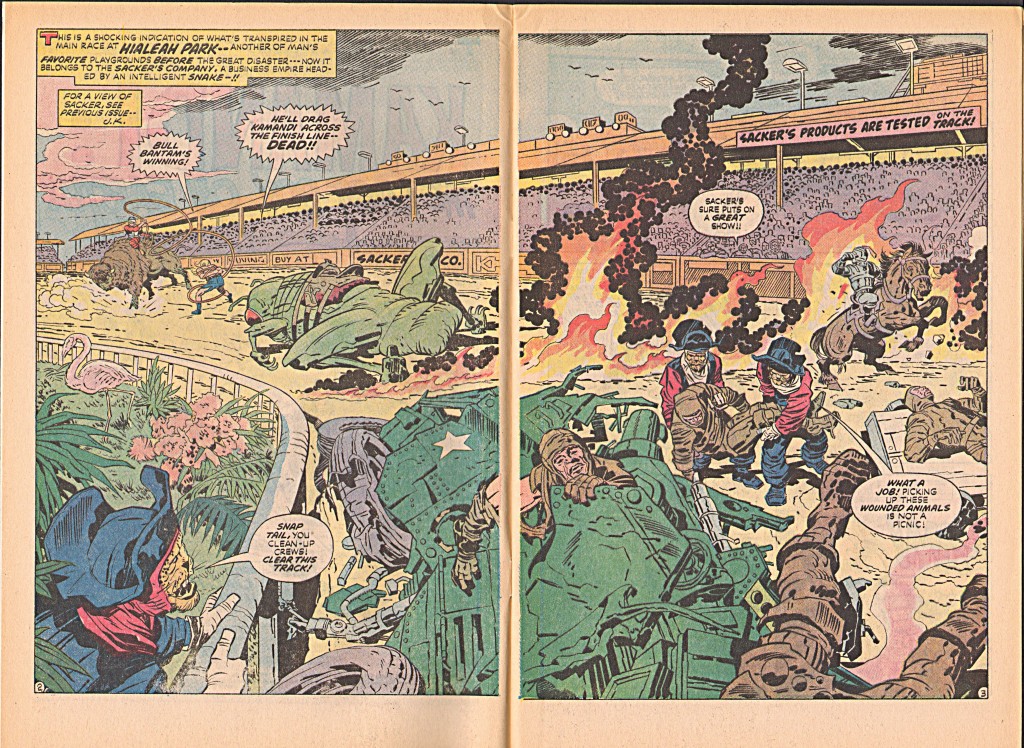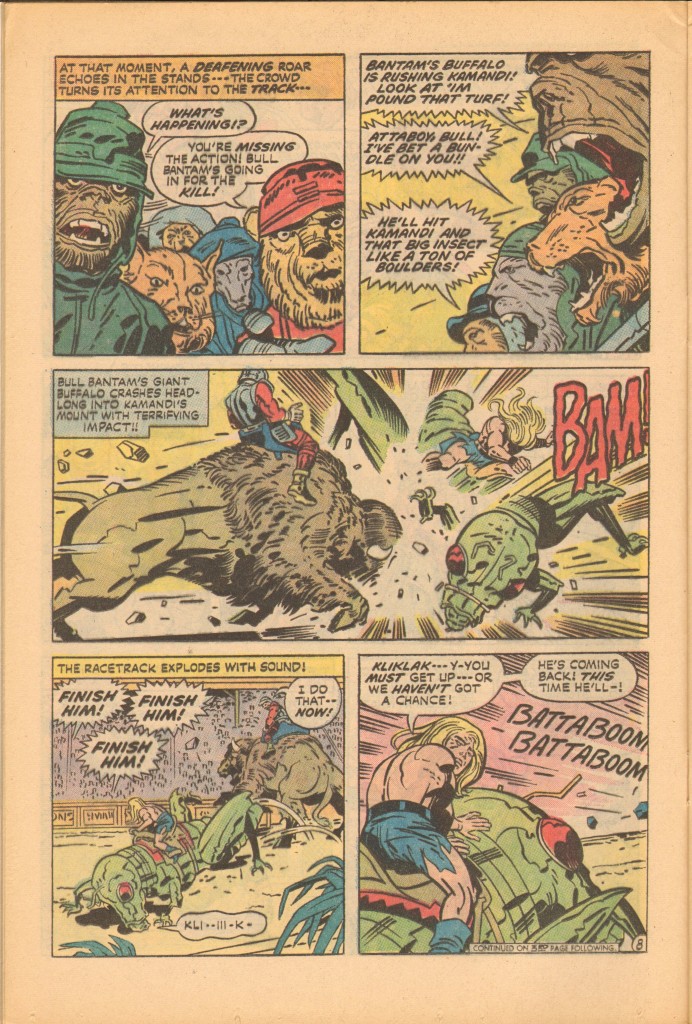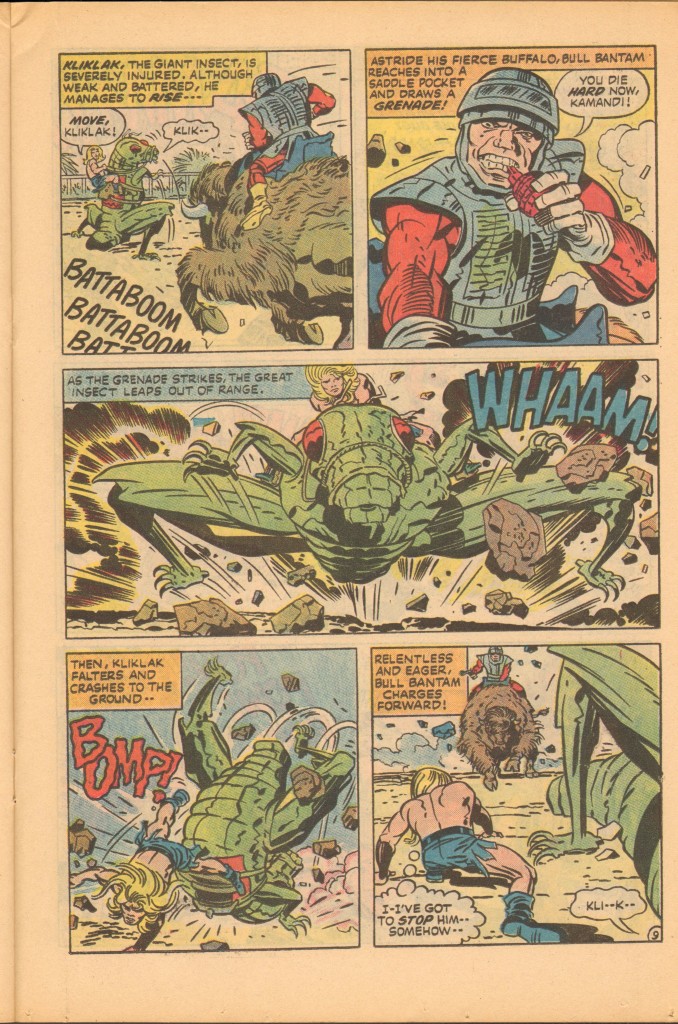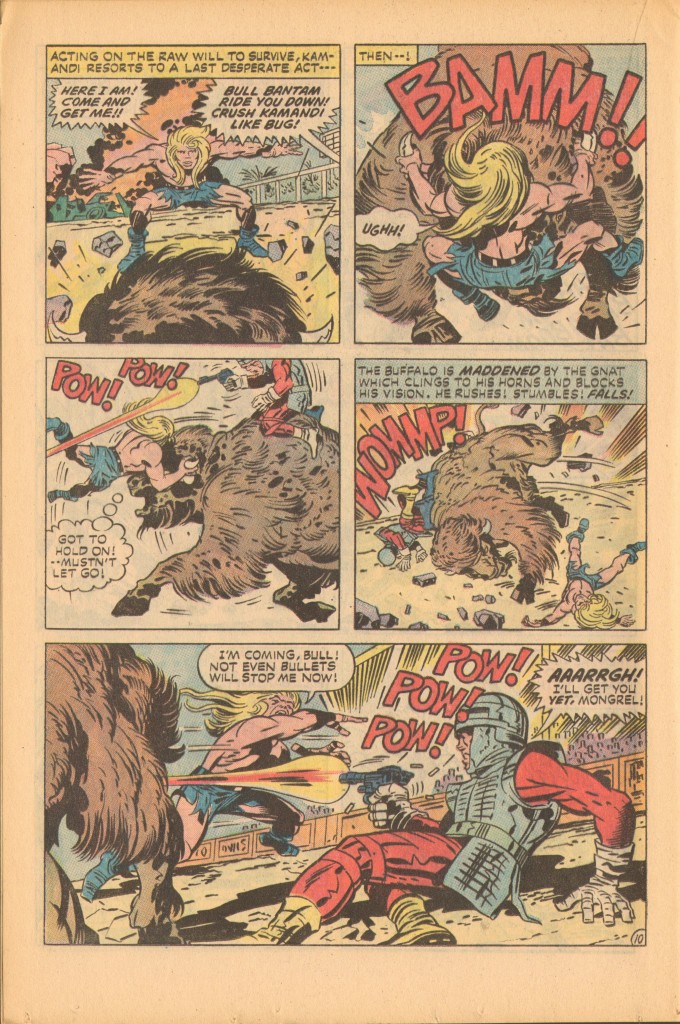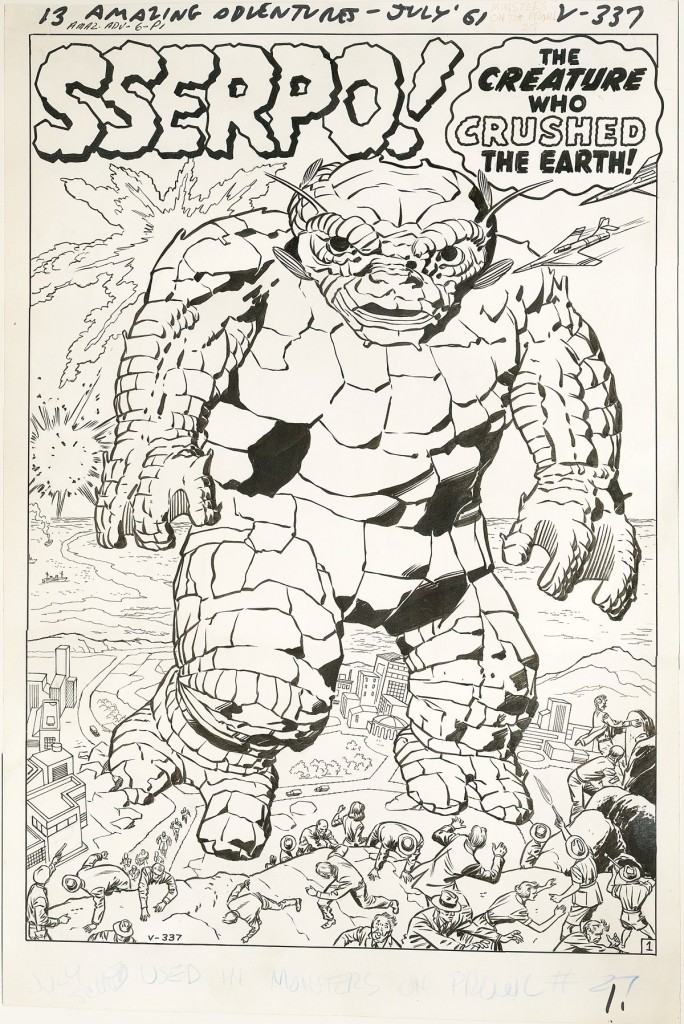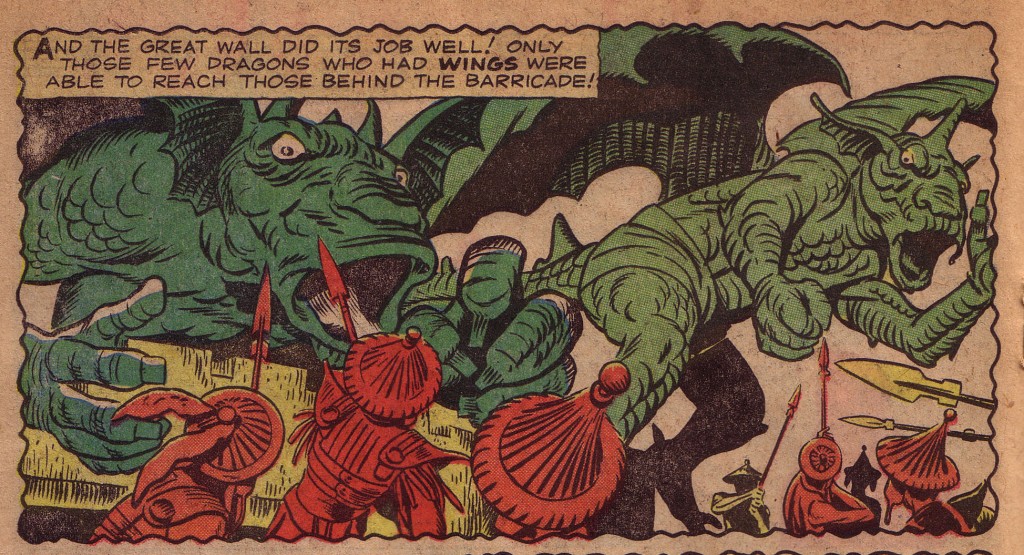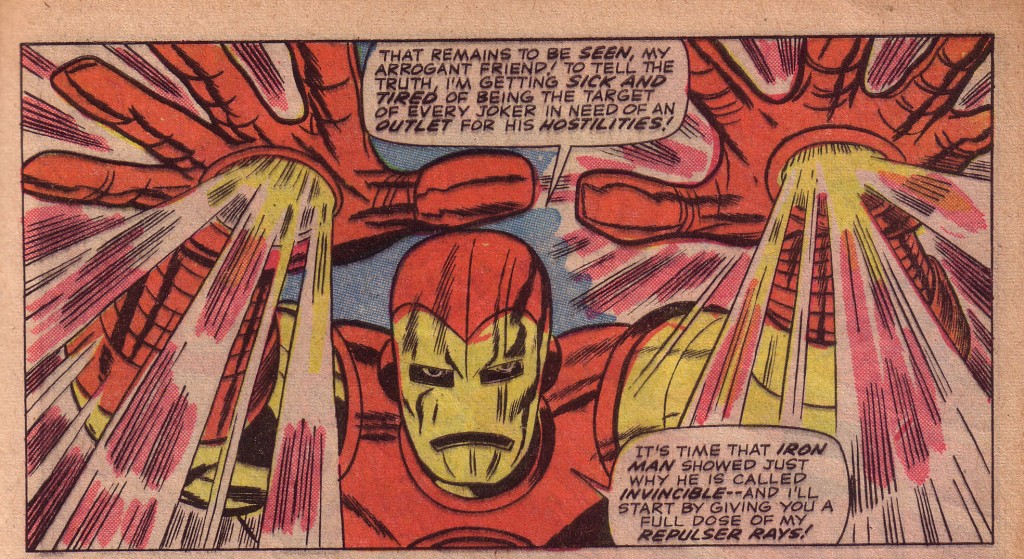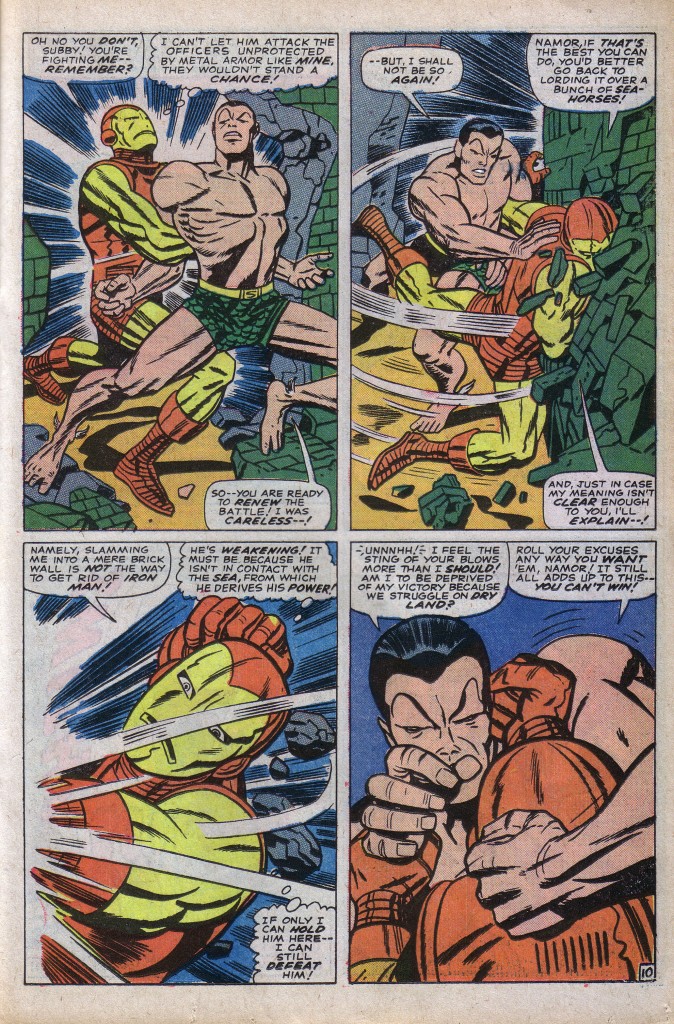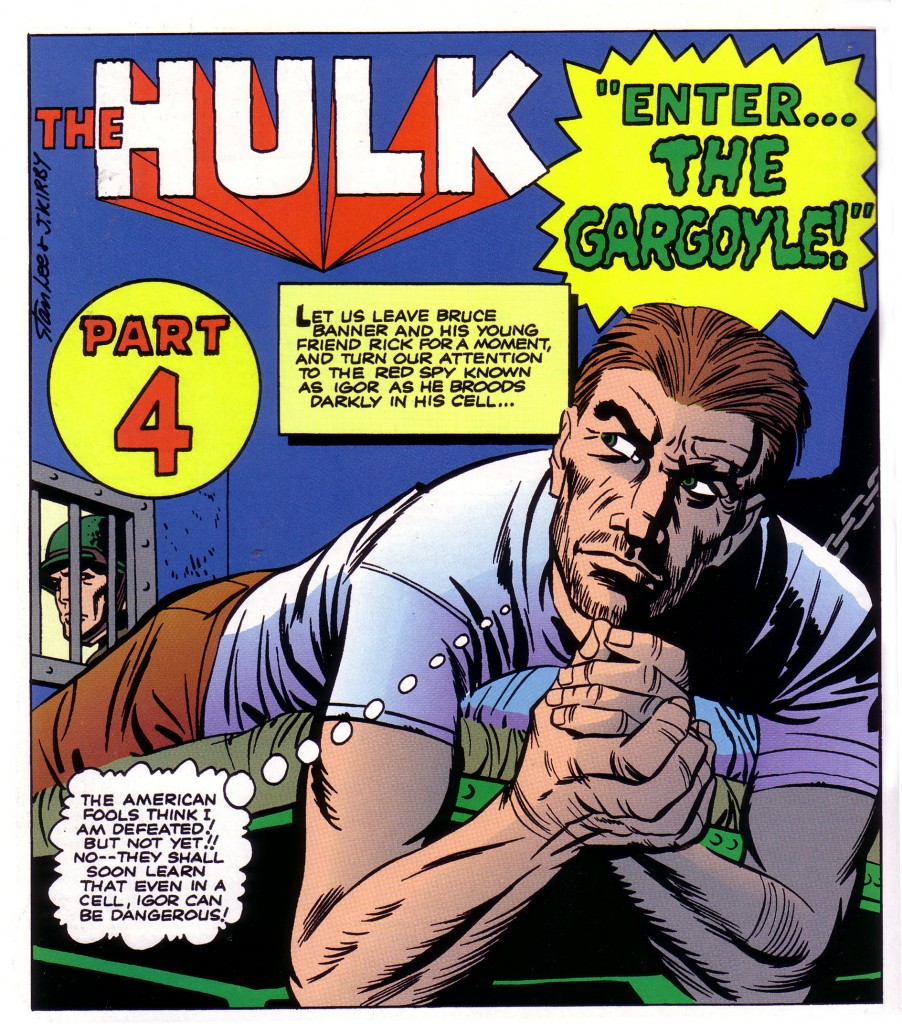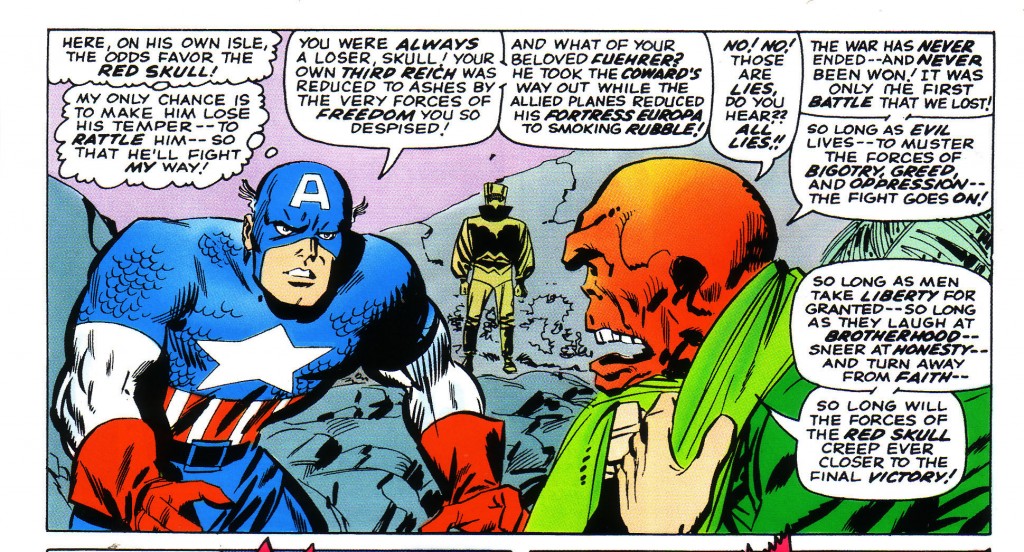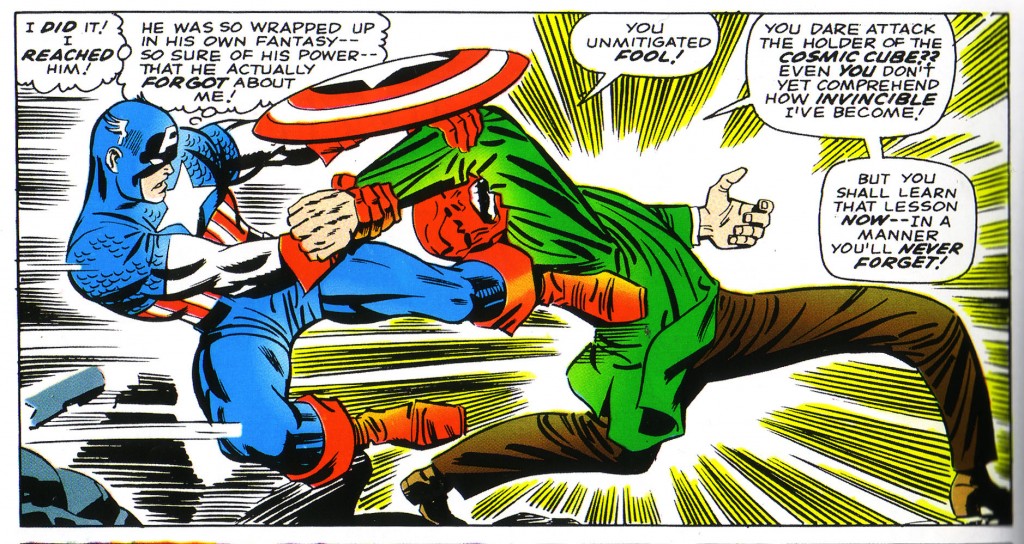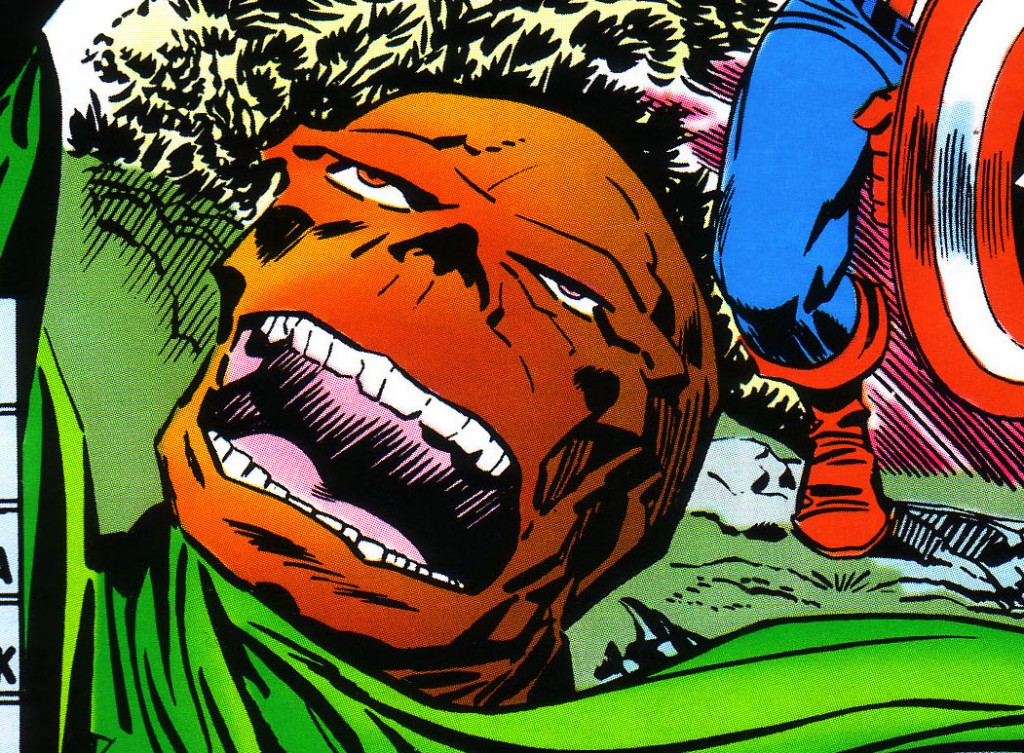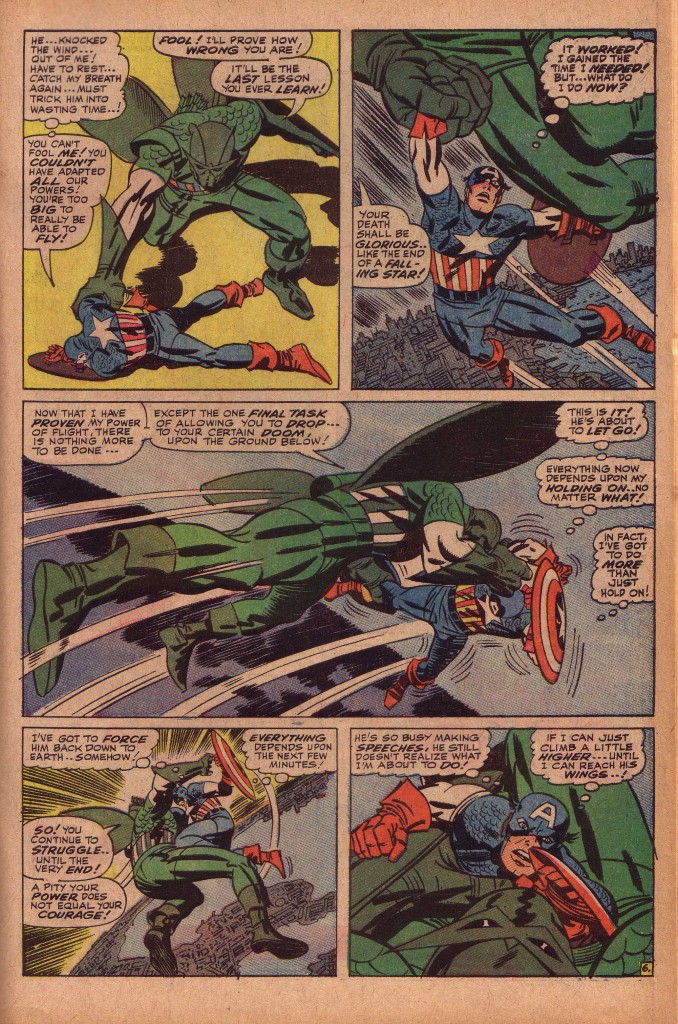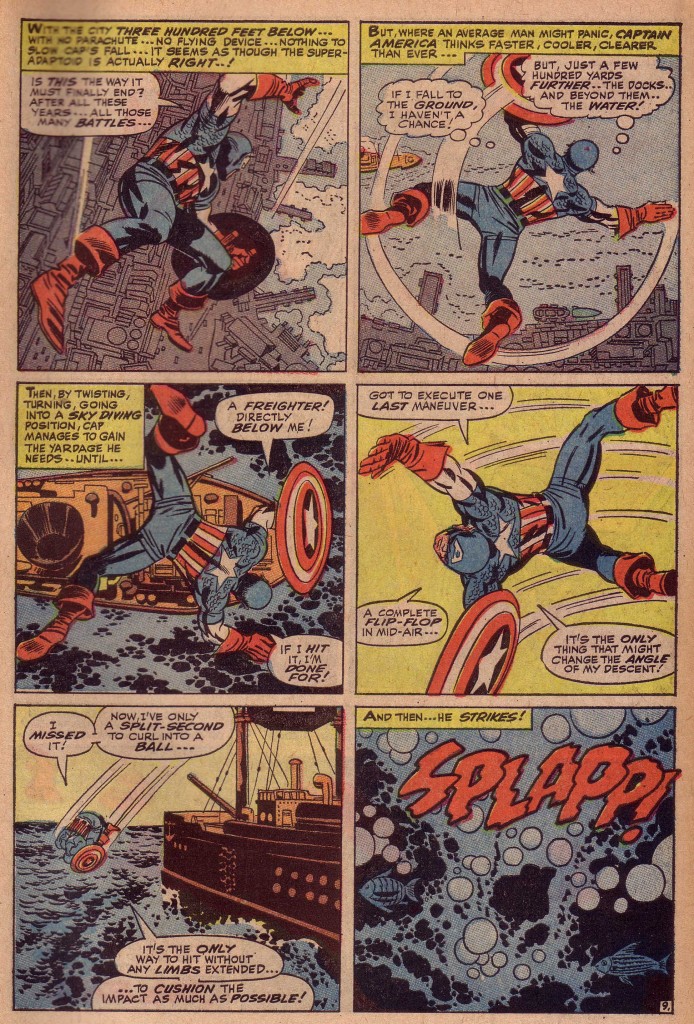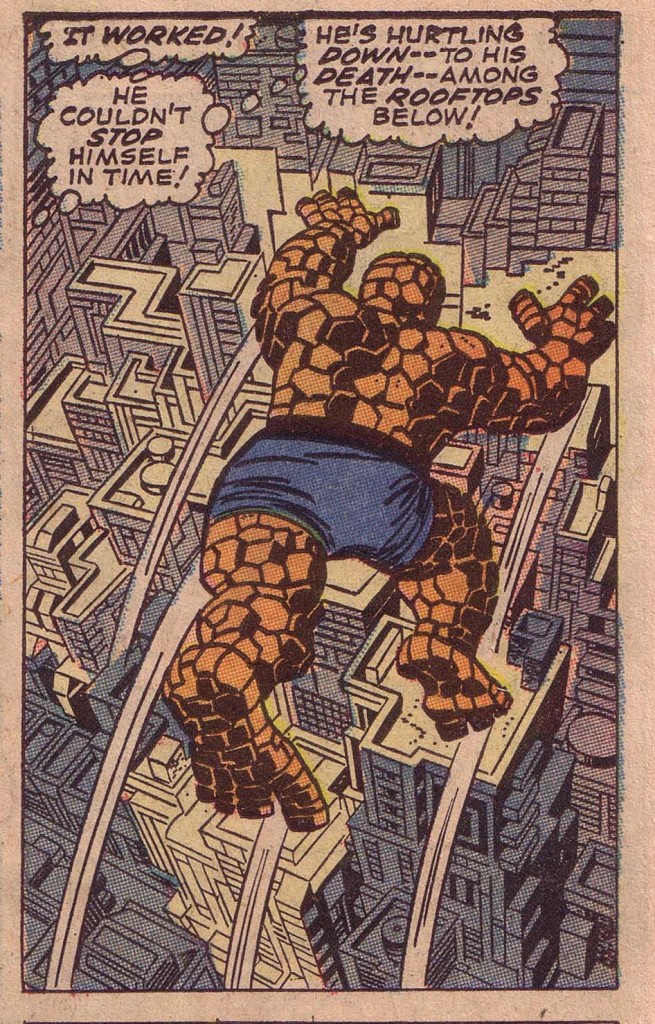There is certainly no question that the first comic book superhero was Superman. What is also certain is the fact that Jerry Siegel and Joe Shuster based their revolutionary new character on several existing prototypes, one of which was Hugo Danner, the protagonist in Author Phillip Wylie’s novel Gladiator.
His scientist father inoculates Hugo Danner’s mother with a serum that gives their child super strength, and the novel essentially tells the story of Danner’s tribulations in dealing with his powers. Almost from birth, Danner is feared and mistrusted for his strange inhuman abilities. Danner enlists in the army during World War I, and is initially quite enthusiastic in his role as a devastating killing machine, until he begins to see the horror and futility of war itself. After the war is over, Danner resolves to use his powers to change the world for what he sees as the better. He pays a call on a corrupt politician named Melcher, who is funded by the armaments industry, in an effort to prevent Melcher from passing a bill to finance the war machine. Danner threatens the politician thusly:
“Remember this Melcher, No one on Earth is like me- and I will get you if you fail to stop. I’ll come for you if you squeal about this- and I leave it to you to imagine what will happen. You’re all done for, you cheap swindlers. And I am Doom!”
What is most interesting about this exchange is that it is strikingly similar to a sequence in Action Comics #1, featuring the first appearance of Superman. Herein, the Man of Steel uncovers the nefarious dealings of a Washington lobbyist, whose policies favor America getting involved in the European conflict. Superman takes him for a sky ride in order to intimidate him.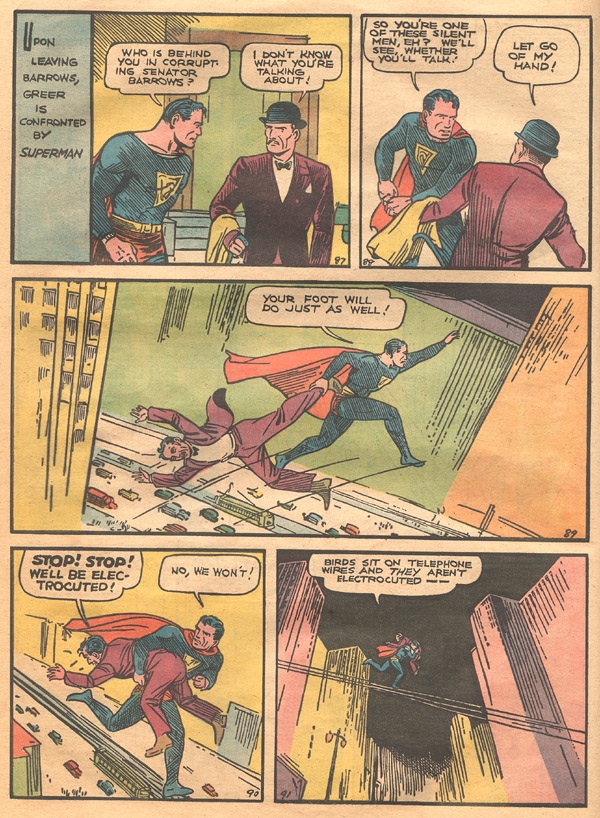
What is extraordinary to contemplate is the fact that this comic was published in 1938, a period when it was still possible to view an impending war in Europe from an anti-war isolationist perspective. Compare this segment to the fervor of Captain America, a scant three years later.
Phillip Wylie’s story takes place during and after World War I, which was deemed so horrific a conflict that many were resolved to put an end to war entirely. As a result, the public’s response was slow to censure Adolph Hitler’s brutality. Even when Simon & Kirby introduced Captain America in December 1940, depicting the hero delivering a right cross to Adolph, many people reacted unfavorably to the obvious political statement of violent anti-fascism. This was exactly one year prior to the attack on Pearl Harbor in 1941, but events were proceeding apace in Europe as first Poland and then France fell before the Blitzkrieg. In the United States, a Nazi organization called the German American Bund was established to promote a favorable reaction to Nazism. In issue five of Captain America Comics, the hero deals with Bund spies and saboteurs who threaten the security of the nation.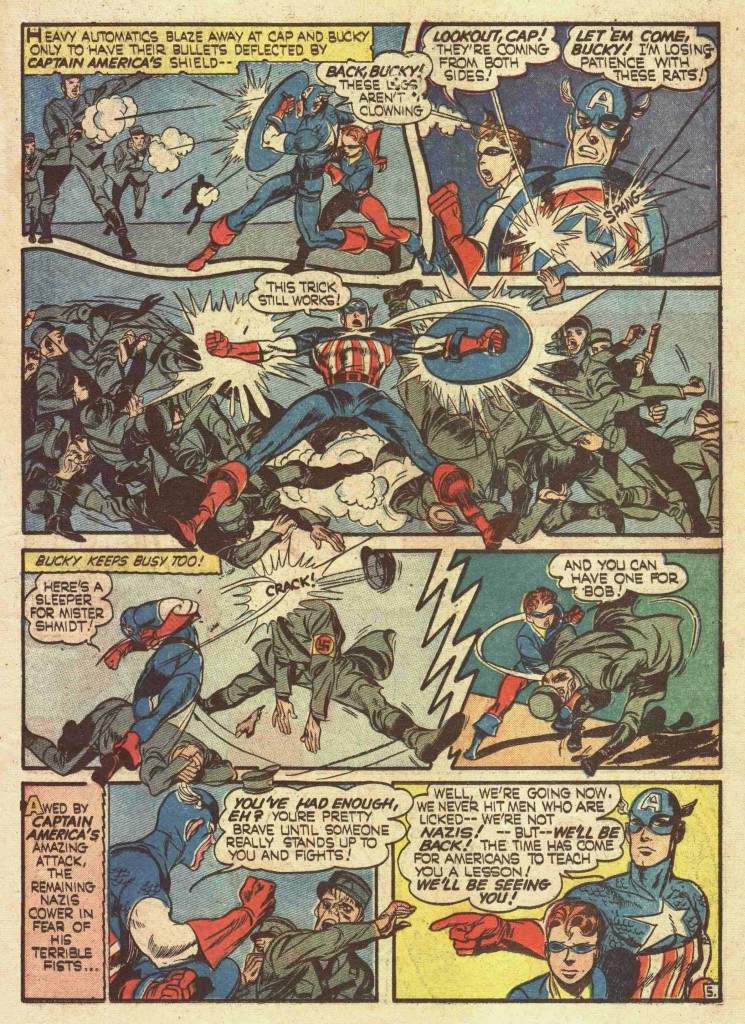
The third panel on this page is a fantastic display of Kirby Kinetics, as Cap sweeps his arms back to deck a dozen Nazis. Each Nazi figure in the panel is carefully rendered to accentuate the impact of Cap’s action. Flailing Nazi arms and legs follow the trajectory of Cap’s arms and the impact starburst emanating from them.
In my estimation, the fourth panel has Cap in a spectacularly contorted yet elegant pose, which few other artists could have pulled off. The right leg is extended to the rear, while the foreshortened torso twists to the left, following the swing of Cap’s right cross. The cocked left arm sheathed in red gauntlet gives the pose extra dynamism.
Captain America epitomized the chauvinism of pre-war American military might embodying righteousness. Simon and Kirby gave him an army of fiendish villains to counter his wholesomeness, led by the ghoulish Red Skull, shown here looming threatening in this splash panel from Captain America #7. Here is another great example of the Big O composition, as the eye moves from the Skull’s dome across Cap’s shoulders , down his shield to Bucky and the figures below him and then back up the pipe to the Skull’s leering visage.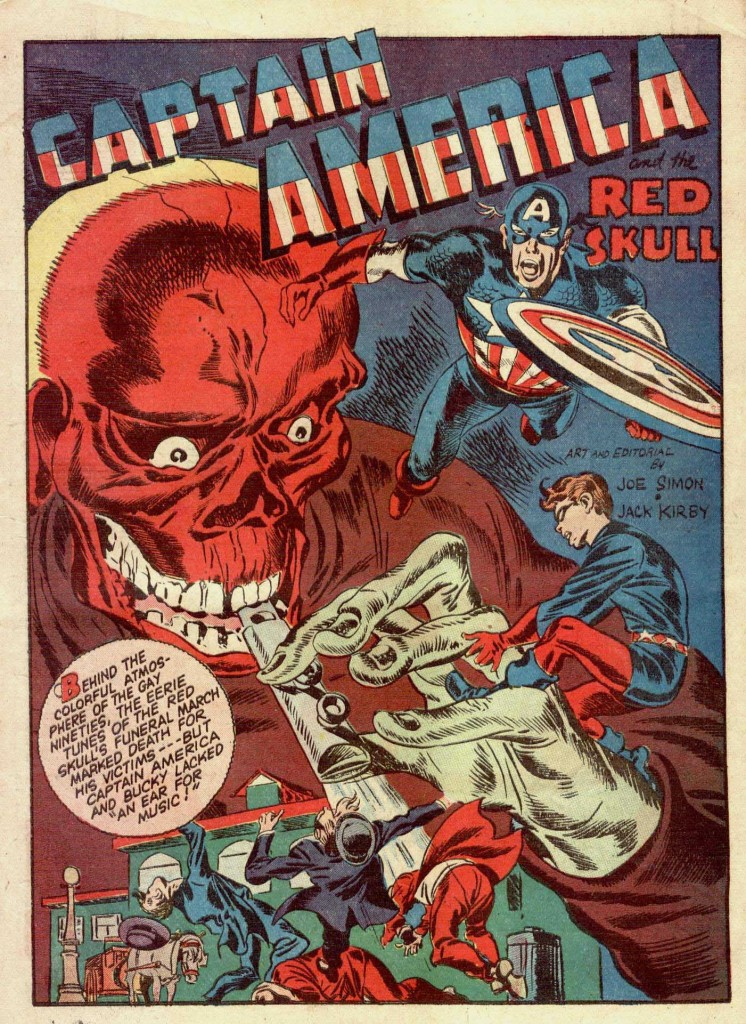
One had to wonder what would have generally been the fate of the superhero if war had not broken out in earnest, considering the fate of most of these characters when the conflict had ceased. Captain America quickly became an anachronism in a post-war world that increasingly looked askance at super-patriotism. Superman endured, but was often reduced to combating absurd villains like Mr. Mxyzptlk and the Bizarros. Kirby with Stan Lee revived Captain America in the mid- sixties, but the character still labored under a cloud of self-doubt and insecurity in a world that was coming to terms with issues of U.S. imperialism surrounding the Vietnam War.
Kirby, as a veteran who was a part of the American invasion of Nazi occupied France, and had seen the horrors of war first hand, continued to deal in his work with the ambivalence towards violence in the human heart. In his seminal series, The New Gods, Kirby shows us the torment of Izaya, a warrior devastated by the climactic struggles in his world, and the patriarch’s ultimate rejection of war.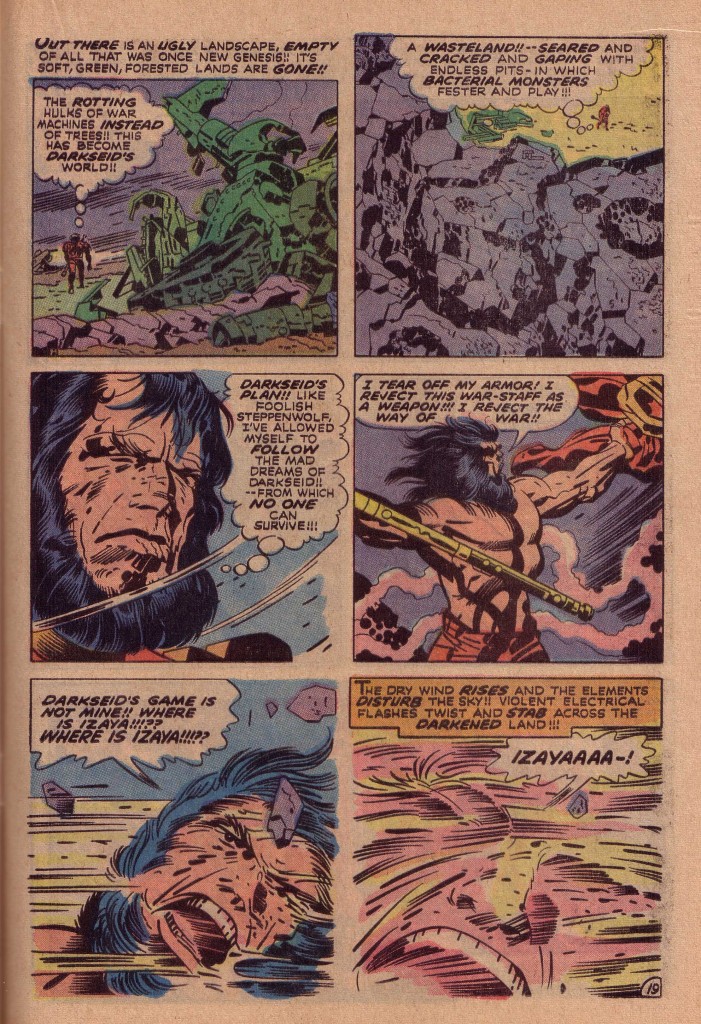
This is of course, a pivotal moment in the saga of Kirby’s Fourth World, because it is when Izaya is free of the rage of war that he is able to connect with the rejuvenating power of the Source and find his destiny in his identity as Highfather. The issue is one of Kirby’s most powerful statements and continues to resonate to this day. How indeed doea a human being resolve the conflict in his or her soul?
Image 1-Action Comics #1 Jerry Siegel and Joe Shuster
Thanks to Dusty Miller for image
Image 2-Captain America #5 Joe Simon and Jack Kirby
Image 3-Captain America #7 Joe Simon and Jack Kirby
Image 4- New Gods #7 Jack Kirby, Mike Royer


